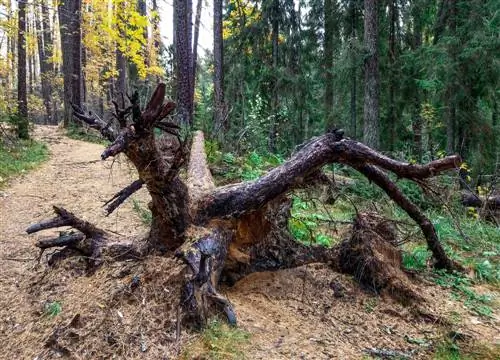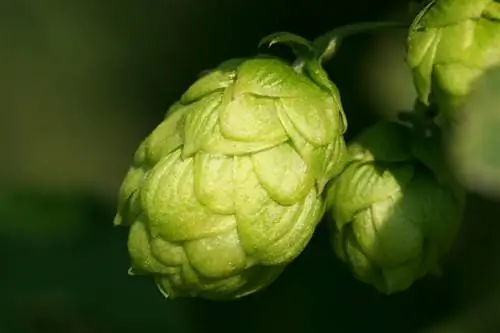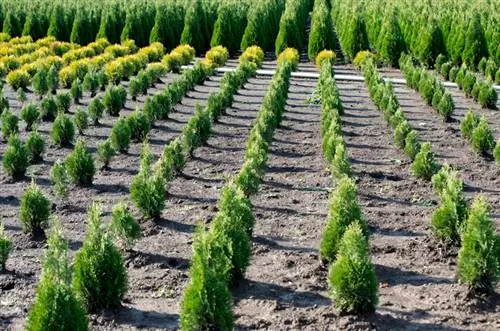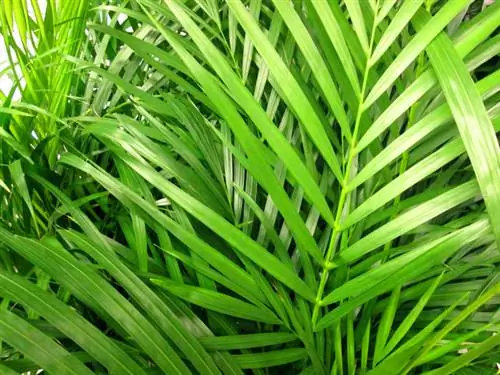- Author admin [email protected].
- Public 2023-12-25 17:45.
- Last modified 2025-01-23 11:21.
Below the visible larch, deep in the earth, is its richly branched root system, which keeps it alive for centuries. Its functions are numerous and sophisticated. A secure footing is just as important as basic supplies of water and nutrients.
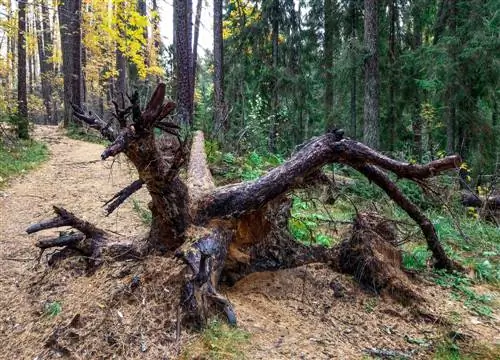
How is the larch root system structured?
The larch has a cardiac root system, which consists of deep and shallow roots as well as obliquely growing main roots with numerous lateral branches. This robust root system enables the larch to stand securely, adapt to different soils and provide an optimal supply of water and nutrients.
Robust roots
The thick trunk and the lush crown suggest that there must be a powerful root system hidden in the earth. This is the only way that this magnificent tree can withstand storms and periods of drought for centuries, and is also so well cared for that it reaches a height of 50 m.
Heart root system
Larch naturally grows freely in forests, but more rarely in gardens. In the forest it has to provide itself with everything important, from water to nutrients. So that the supply works under a wide variety of conditions, it has developed a so-called cardiac root system in the course of evolution.
- Mixed form of deep and shallow roots
- strong, slanting main roots
- with numerous lateral branches
- Cross section of the root ball is reminiscent of a heart
The development of the root system
In its early youth, the larch first forms a deep taproot, which anchors the tree firmly to the ground and thus gives it a secure footing. Later, no additional tap roots are added, but many strong roots develop, giving the tree even more stability. Of course, the millimeter-fine roots are also formed, which are responsible for the nutrient and water supply.
Adaptation to soil conditions
If a larch root encounters resistance, it simply changes the direction of growth. The root energy is enormous and penetrates to depths of 2 m. This means that this tree can cope with almost any soil, even if it contains rock.
Root distortions and root injuries
If the path deep into the earth is blocked by hard obstacles, the roots become distorted because they practically have to grow around them. Root injuries are by no means rare, but they gum up very quickly. Root rot has little chance.
Note:Root fungi near larch roots are not uncommon, as this tree often lives in symbiosis with them.
Spacious roots
With each year of life, the crown of the larch takes up more and more space. At the same time, this also applies to the root system, although we cannot see it with our eyes. We should not ignore this fact, but should take it into account when planting.
- leave a large distance from property boundaries
- do not plant close to house walls
- Consider the course of underground pipes
Tip
Only plant a larch tree in a large garden, as it can only really develop well there. A more suitable tree species will certainly be found for smaller gardens.
Neighbor planting
A large distance is also required from neighboring plants so that their roots do not hinder each other and compete for nutrients. The nearest tree should be planted at least 5 m away.
So that the larch location is still greened, you can plant weak-rooted ground cover.
Larch as bonsai
The Larix, as the larch is botanically called, is also a popular bonsai tree. It's not just its above-ground parts that have to be constantly cut. Whenever the substrate is replaced, part of the roots must also be cut away.

